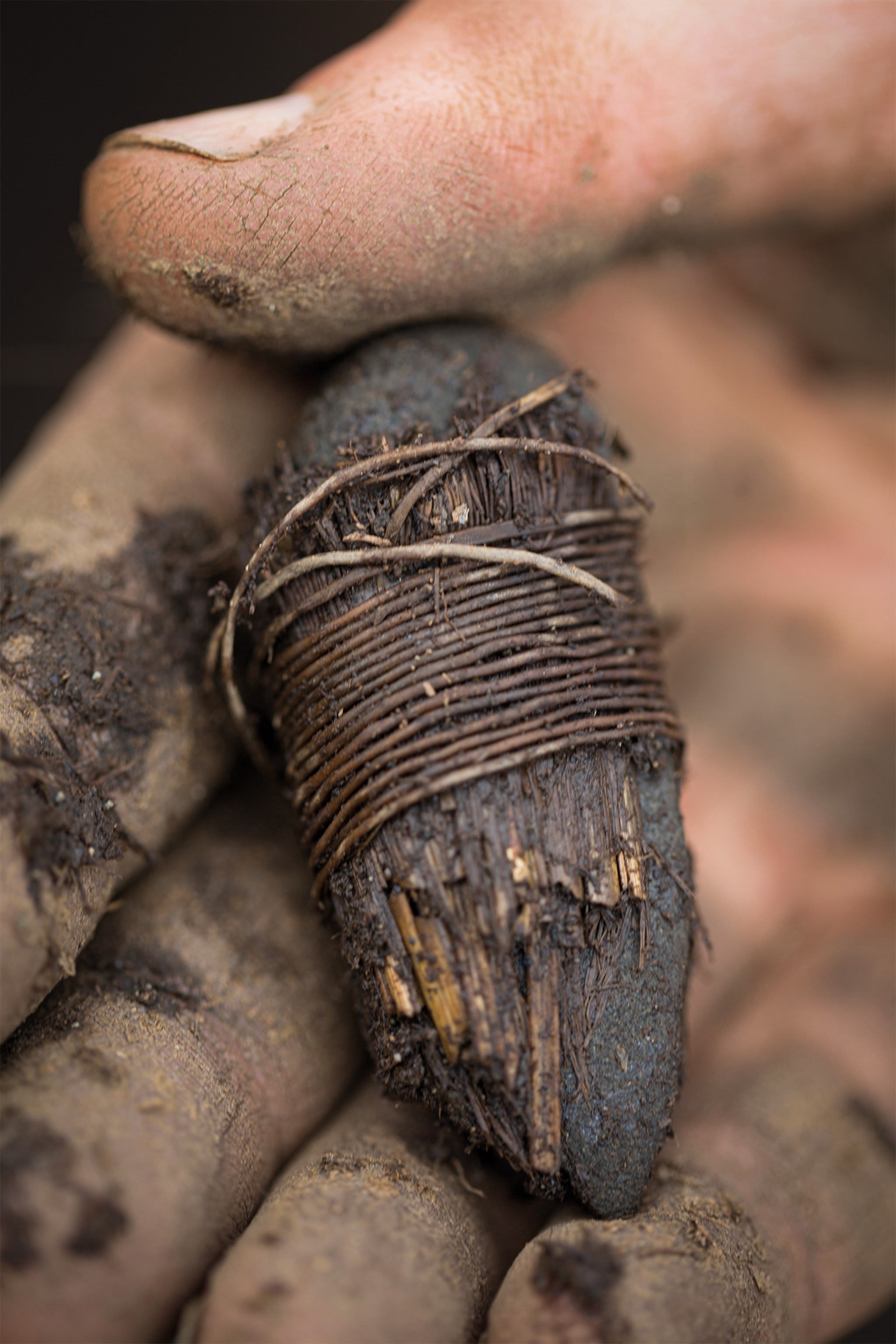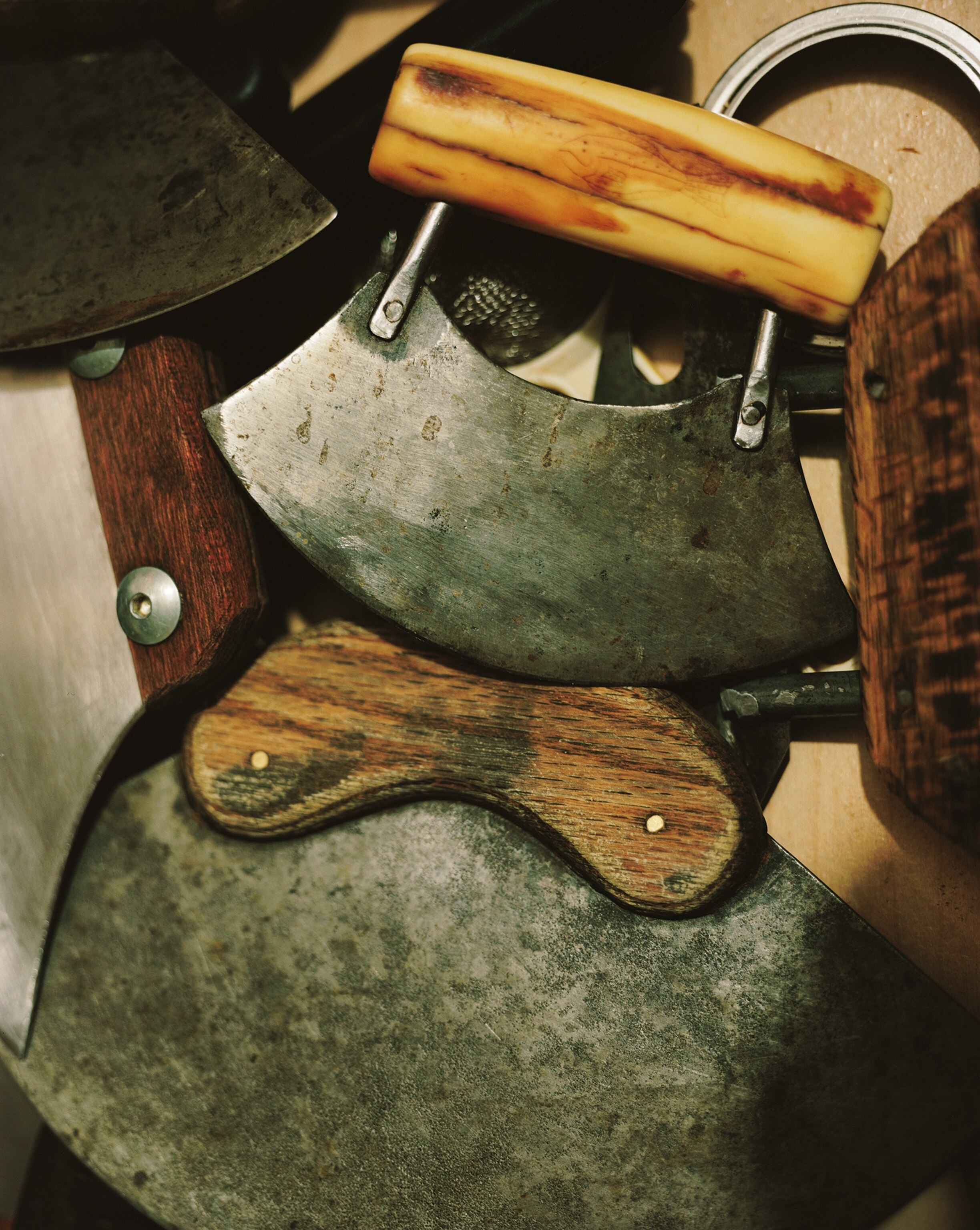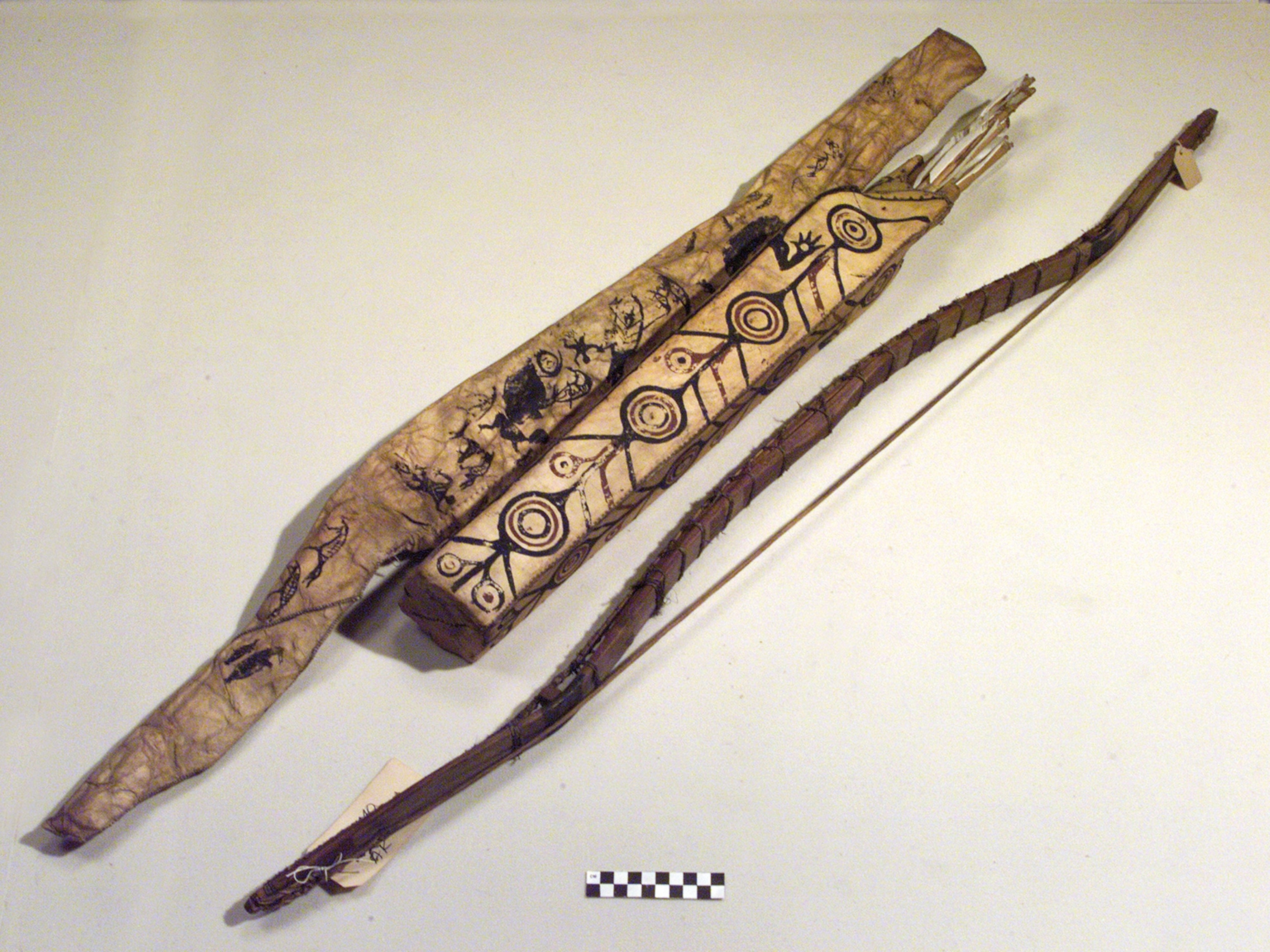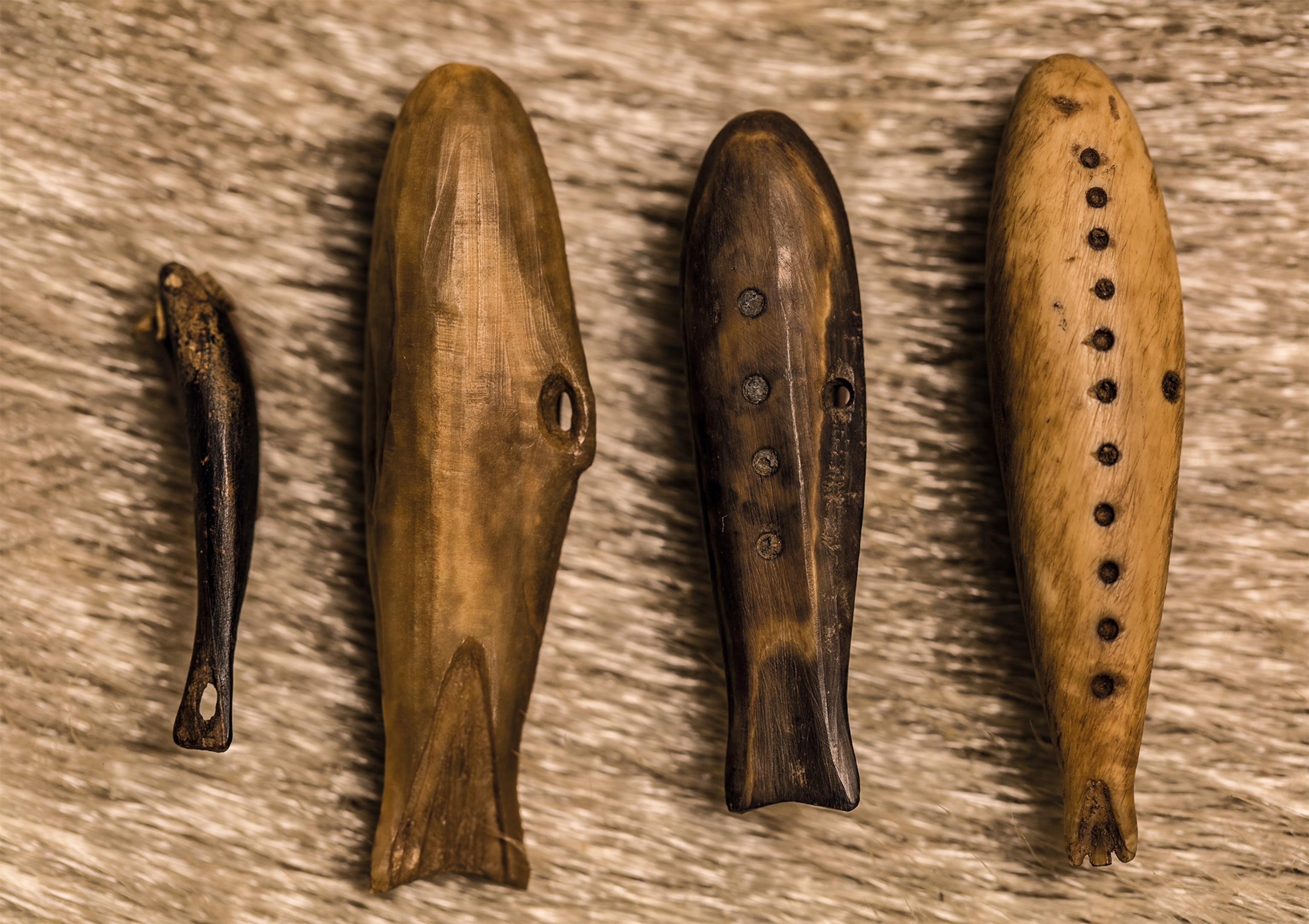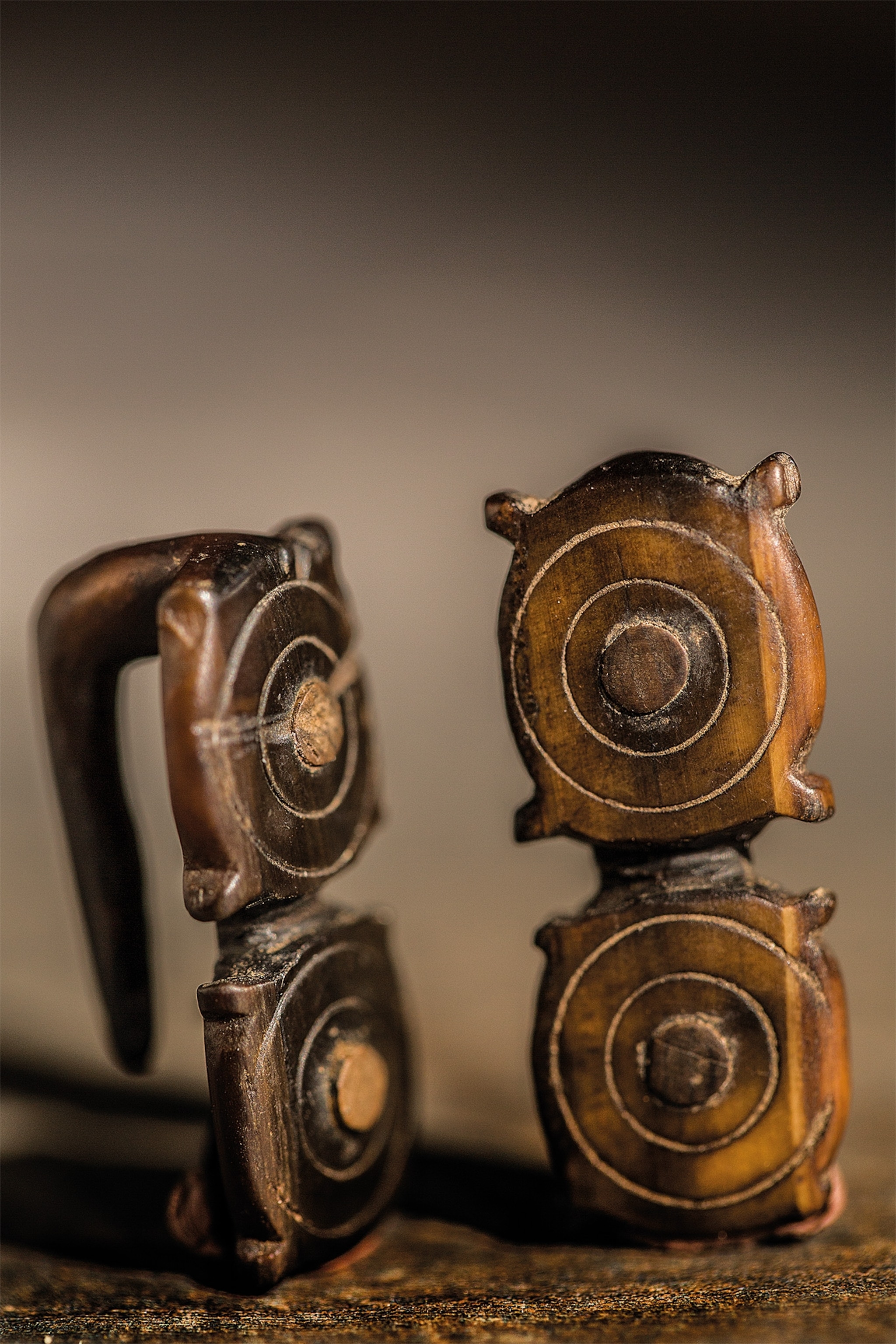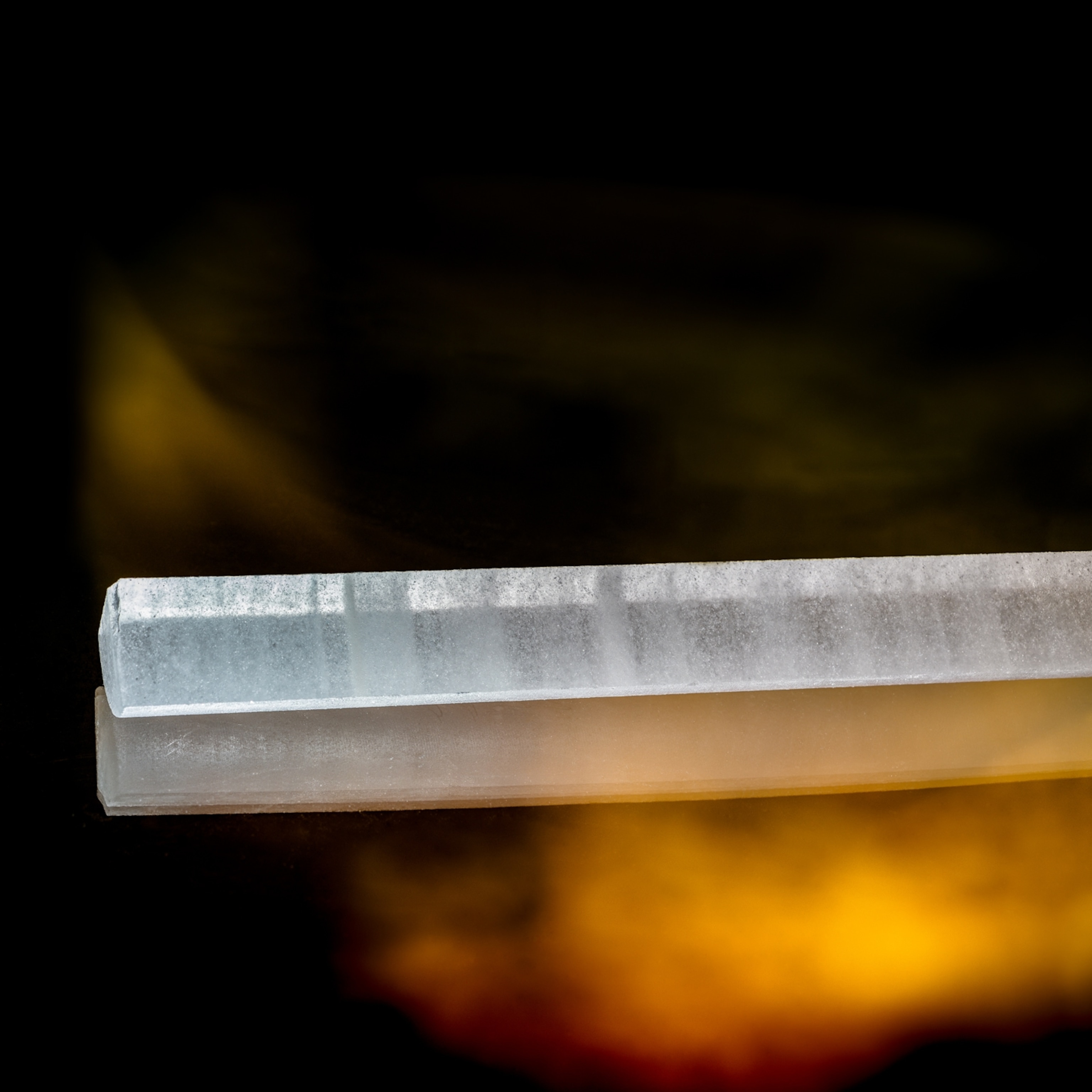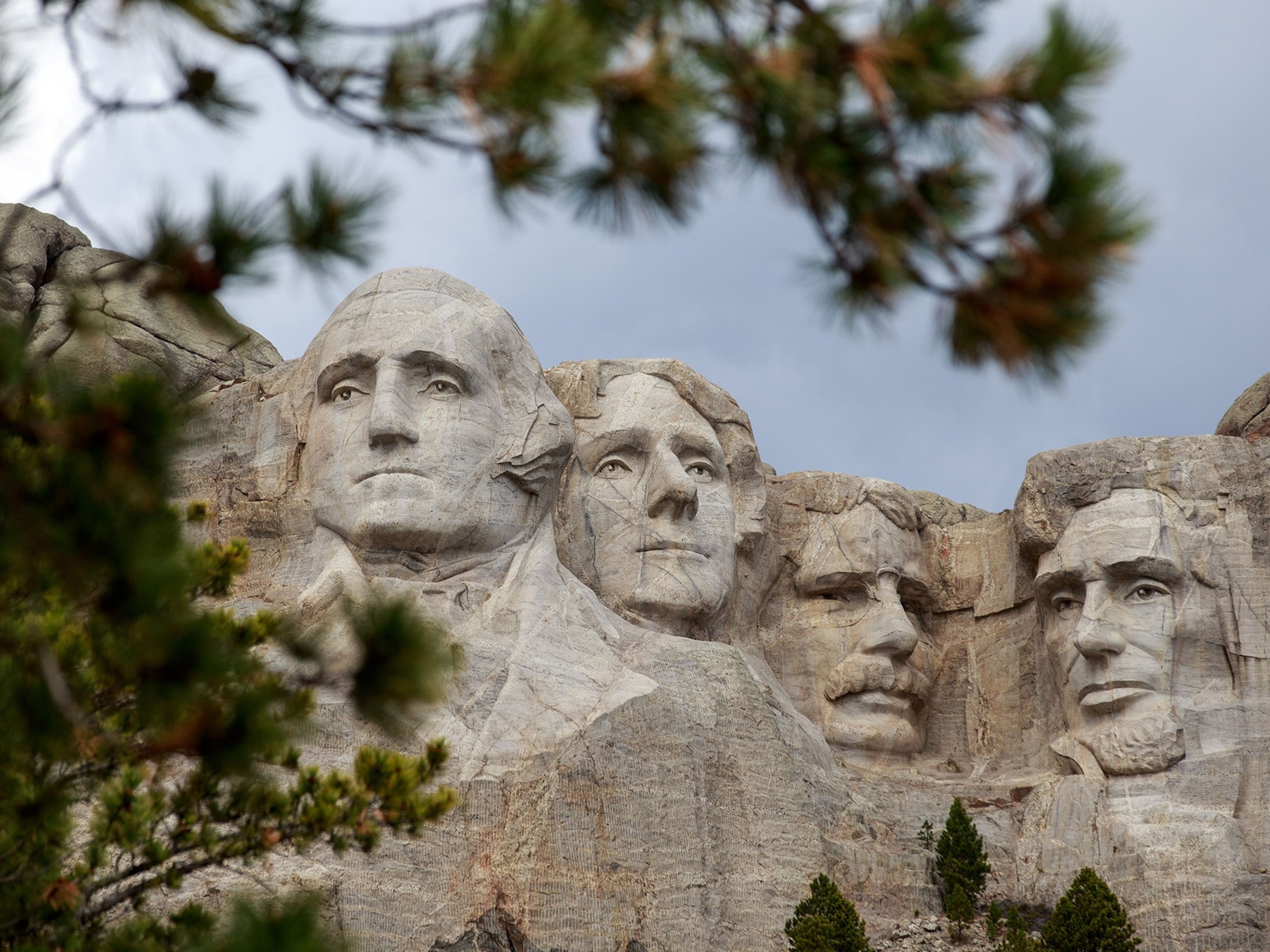Deadly historic ambush preserved in Alaskan permafrost
Frozen earth protected evidence of an attack some 400 years ago at Nunalleq, but warming temperatures threaten Alaskan sites still holding its buried history.

The archaeological site of Nunalleq on the southwest coast of Alaska preserves a fateful moment, frozen in time. The muddy square of earth is full of everyday things that the Indigenous Yup’ik people used to survive and to celebrate life here, all left just as they lay when a deadly attack came almost four centuries ago.
As is often the case in archaeology, a tragedy of long ago is a boon to modern science. Archaeologists have recovered 100,000 artifacts at Nunalleq, from typical eating utensils to extraordinary things such as wooden ritual masks, ivory tattoo needles, pieces of finely calibrated sea kayaks, and a belt of caribou teeth. Beyond the sheer quantity and variety, the objects are astonishingly well preserved, having been frozen in the ground since about 1660.
The ground’s frigid state even preserved rare organic material such as grass ropes, salmon berry seeds, and grass strands woven into baskets. “This grass was cut when Shakespeare walked the Earth,” observed lead archaeologist Rick Knecht, of the University of Aberdeen in Scotland.
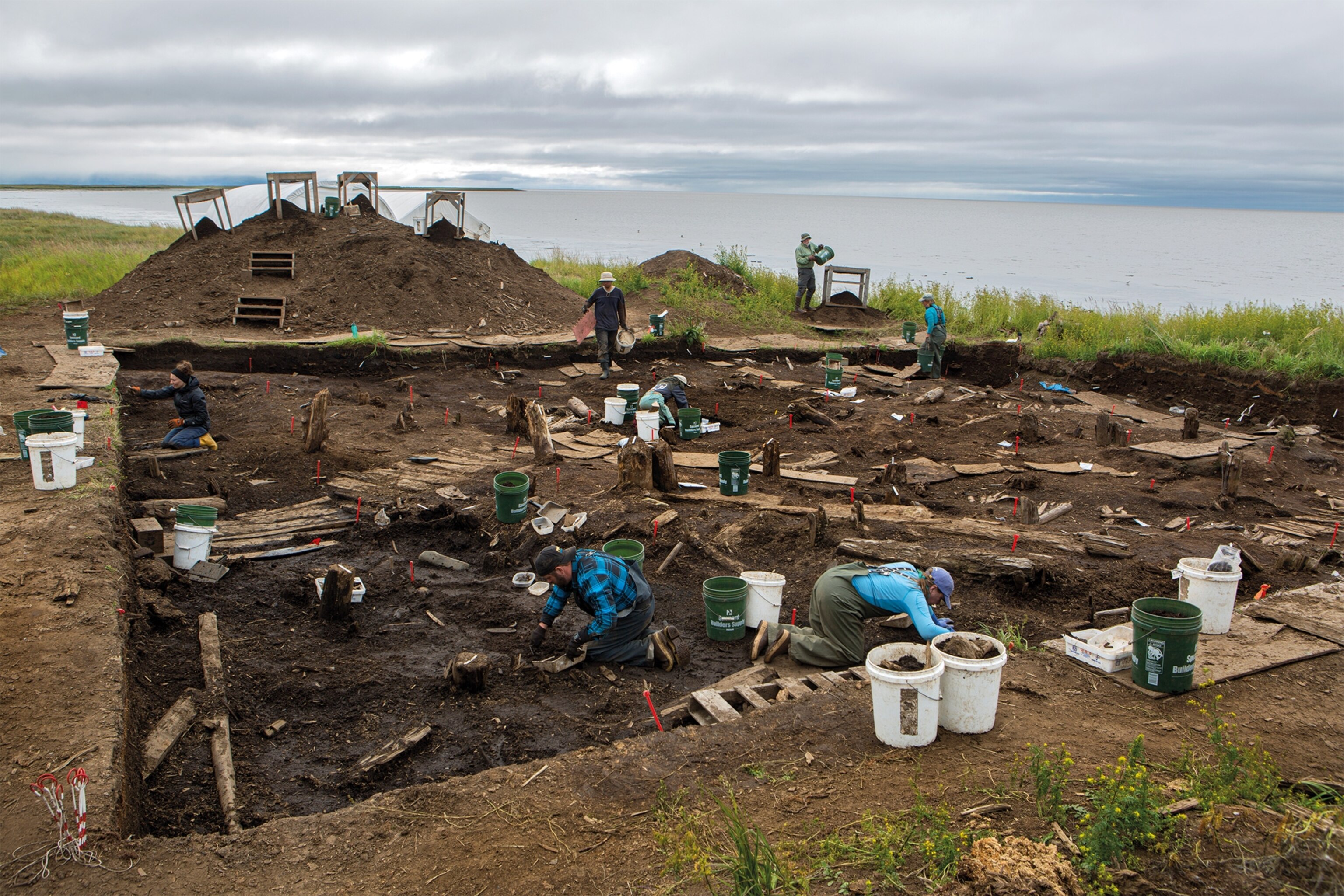
Land of the Yup’ik
Archaeologists believe the Yup’ik people’s ancestors originated in eastern Siberia and Asia. They first crossed the Bering Sea to North America around 10,000 years ago and gradually moved into the coastal areas of western Alaska. Around A.D. 1400 communities moved up the coastal rivers, including the Yukon, to form settlements farther inland.
(Indigenous peoples defend Earth's biodiversity—but they're in danger.)
Rather than the frigid northern lands of what is now Alaska, the climate in these areas was milder. The waterways supplied the Yup’ik with food; from the shore or within their kayaks, hunters used harpoons or bows and arrows to catch salmon and hunt mammals. During the year, people would travel to different seasonal camps to harvest different food sources. In the colder months, they would shelter in structures made out of earth.
Treasures of the Nunalleq
It was around the perimeter of what was once one of these large sod structures that Knecht and his team of archaeologists made an astonishing find. They uncovered traces of a centuries-old fire that was used to smoke out the residents—some 50 people, probably an alliance of extended families, who lived here when they weren’t out hunting, fishing, and gathering plants. No one, it seems, was spared.
Archaeologists unearthed the remains of someone, likely a woman, who appears to have succumbed to smoke inhalation as she tried to dig an escape tunnel. Skeletons of women, children, and elders were found together, face down in the mud, suggesting that they were captured and killed.

Knecht sees a link between the destruction at the site and the old tales that modern Yup’iks remember. Oral tradition preserves memories of a time historians call the Bow and Arrow Wars Days, when Yup’ik communities fought one another in bloody battles sometime before Russian explorers arrived in Alaska in the 1700s. Nunalleq offers the first archaeological evidence, and the first firm date, for this frightful period, which affected several generations of Yup’ik.
Knecht believes the attacks were the result of climate change—a 550-year chilling of the planet now known as the Little Ice Age—that coincided with Nunalleq’s occupation. The coldest years in Alaska, in the 1600s, must have been a desperate time, with raids probably launched to steal food.“Whenever you get rapid change, there’s a lot of disruption in the seasonal cycles of subsistence,” says Knecht. “If you get an extreme, like a Little Ice Age—or like now— changes can occur faster than people can adjust.”
Colder climates
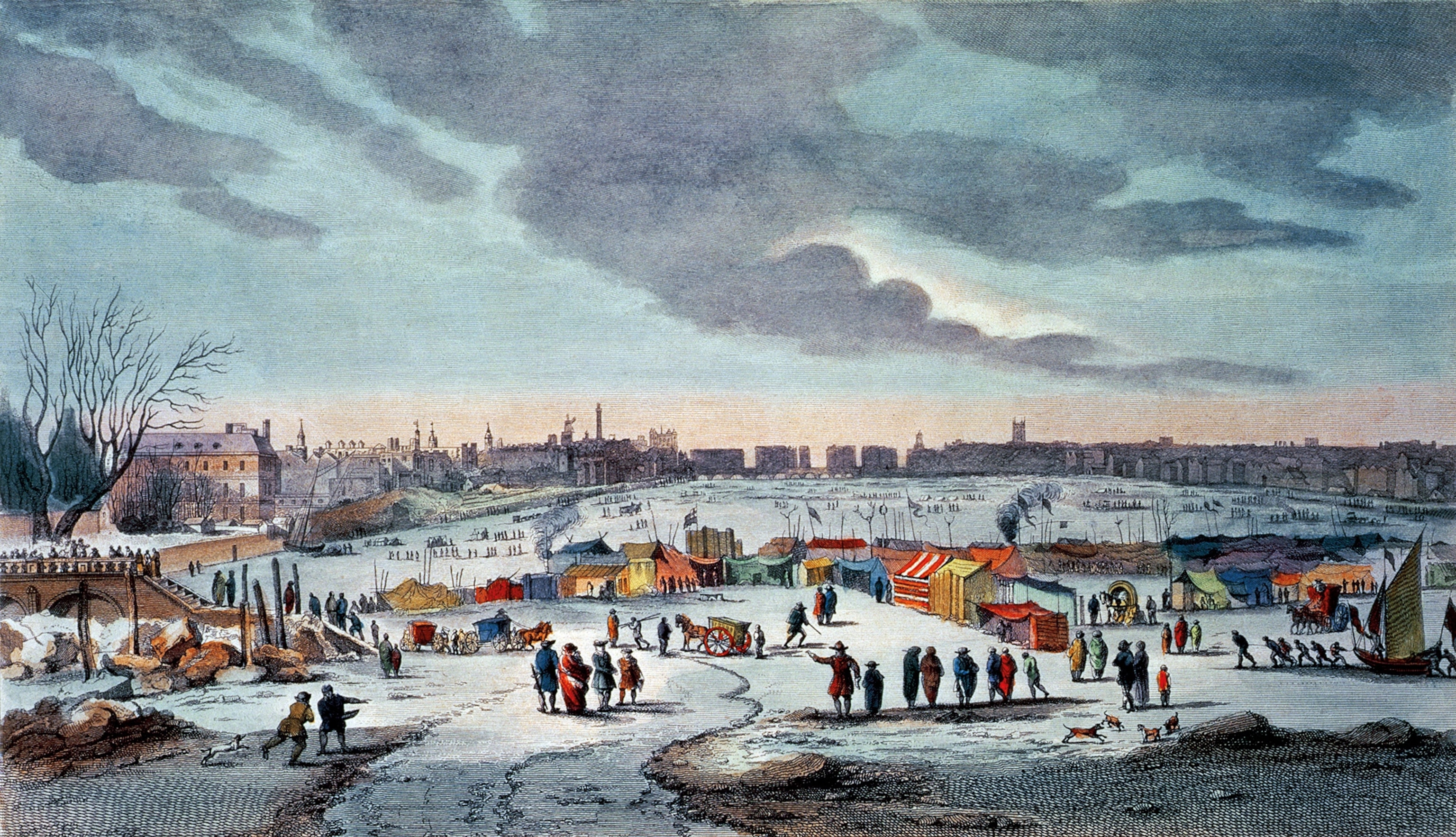
Retreating ice
For centuries, Yup’ik people on both sides of the Bering Sea have made the Arctic tundra their home, but today’s unpredictable and increasingly violent weather has not only thrown off the rhythm of subsistence hunting cycles, it has also driven Nunalleq to the brink of oblivion. In summer everything looks fine as the land dons its perennial robe of white-flowering yarrow and sprigs of cotton grass that light up like candles when the morning sun hits the tundra. The scene turns alarming come winter when the Bering Sea hurls vicious storms at the coast. If the waves get big enough, they crash across a narrow gravel beach and rip away at the remains of the site.
(Arctic permafrost is thawing fast. That affects us all.)
In Quinhagak, the modern Yup’ik village just four miles from Nunalleq, changes brought by the weird weather are a common topic of conversation. “Twenty years ago the elders began to say the ground was sinking,” says Warren Jones, president of Qanirtuuq, the Yup’ik corporation that owns and manages the community’s property. “The past 10 years or so it’s been so bad everybody’s noticed. We’re boating in February. That’s supposed to be the coldest month of the year.”

The Arctic wasn’t always like this, but global climate change is now hammering Earth’s polar regions and threatening hundreds of sites that hold clues to Alaska’s past and its people’s heritage. The permafrost that once preserved centuries-old artifacts is thawing—quickly. As artifacts are exposed, they are susceptible to decay and rot. Scientists estimate that the nine million square miles that make up the Arctic are warming two to three times faster than the rest of the planet.
In southern regions of Alaska, rising sea levels and the Bering Sea’s winter storms are putting coastal heritage sites in even greater danger. Reductions of sea ice, which had protected coastal areas from battering storms, mean that a single severe weather event can cause erosion as far as 100 feet inland. Flooding has not only caused coastlines to recede; it has also swept away buried archaeological sites. Experts predict that sea levels will continue to rise in the coming decades, which means that parts of Alaska’s western coast will suffer storm surges that could regularly top 10 feet. Thawing permafrost in low-lying areas is causing the land to sink.
The result is a disastrous loss of artifacts from little-known prehistoric cultures—like the one at Nunalleq—all along Alaska’s shores and beyond. A massive thaw is exposing traces of past peoples and civilizations across the northern regions of the globe—from Neolithic bows and arrows in Switzerland to hiking staffs from the Viking age in Norway and lavishly appointed tombs of Scythian nomads in Siberia. So many sites are in danger that archaeologists are beginning to specialize in the rescue of once-frozen artifacts.


Nunalleq at risk
In coastal Alaska archaeological sites are now threatened by a one-two punch. The first blow: average temperatures that have risen more than three degrees Fahrenheit in the past half century. As one balmy day follows another, the permafrost is thawing almost everywhere. When archaeologists began digging at Nunalleq in 2009, they hit frozen soil about 18 inches below the surface of the tundra. Today the ground is thawed three feet down. That means masterfully carved artifacts of caribou antler, driftwood, bone, and walrus ivory are emerging from the deep freeze that has preserved them in perfect condition. If not rescued, they immediately begin to deteriorate.
(Thawing permafrost prompts Denali National Park to reimagine its future.)
The knockout blow: rising seas. Since 1900 the global level of oceans has risen about eight inches, a figure that experts believe will continue to increase. It’s a direct threat to coastal sites such as Nunalleq, which is doubly vulnerable to wave damage now that the thawing permafrost is making the land sink.“One good winter storm and we could lose this whole site,” says Knecht.

He speaks from experience. Since the start of the excavation, the relentless action of the sea has torn about 35 feet from the edge of the site. The winter after the 2010 dig was particularly brutal. Residents of Quinhagak remember huge chunks of ice slamming into the coast. By the time Knecht and his crew returned, the entire area they had excavated was gone. Since then, the sense of urgency has only increased.
Archaeology’s potential to inspire an appreciation for the past is what motivated Jones to start the dig. When wooden artifacts began washing up on the beach, he invited Knecht to assess the eroding site, then helped convince the village’s board of directors that excavating Nunalleq was a good idea. Their meeting grew into a unique collaboration in which the community and the visiting archaeologists work as partners.
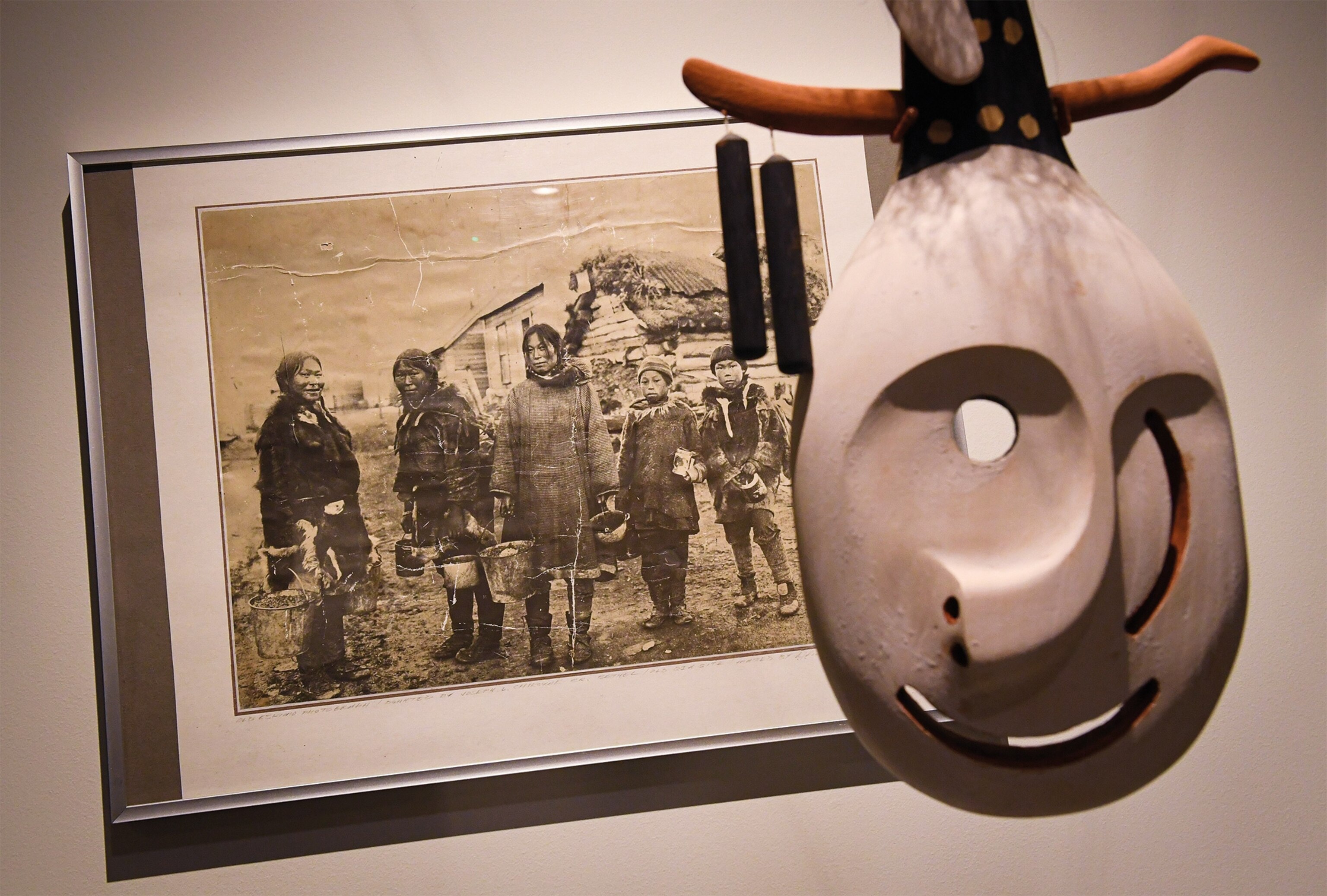

Jones is proud of the partnership that made this possible. He also looks forward to more discoveries at the site and sees a promising future for the center. “I want our kids who are in college now to run [the center] and be proud that it’s ours.”
